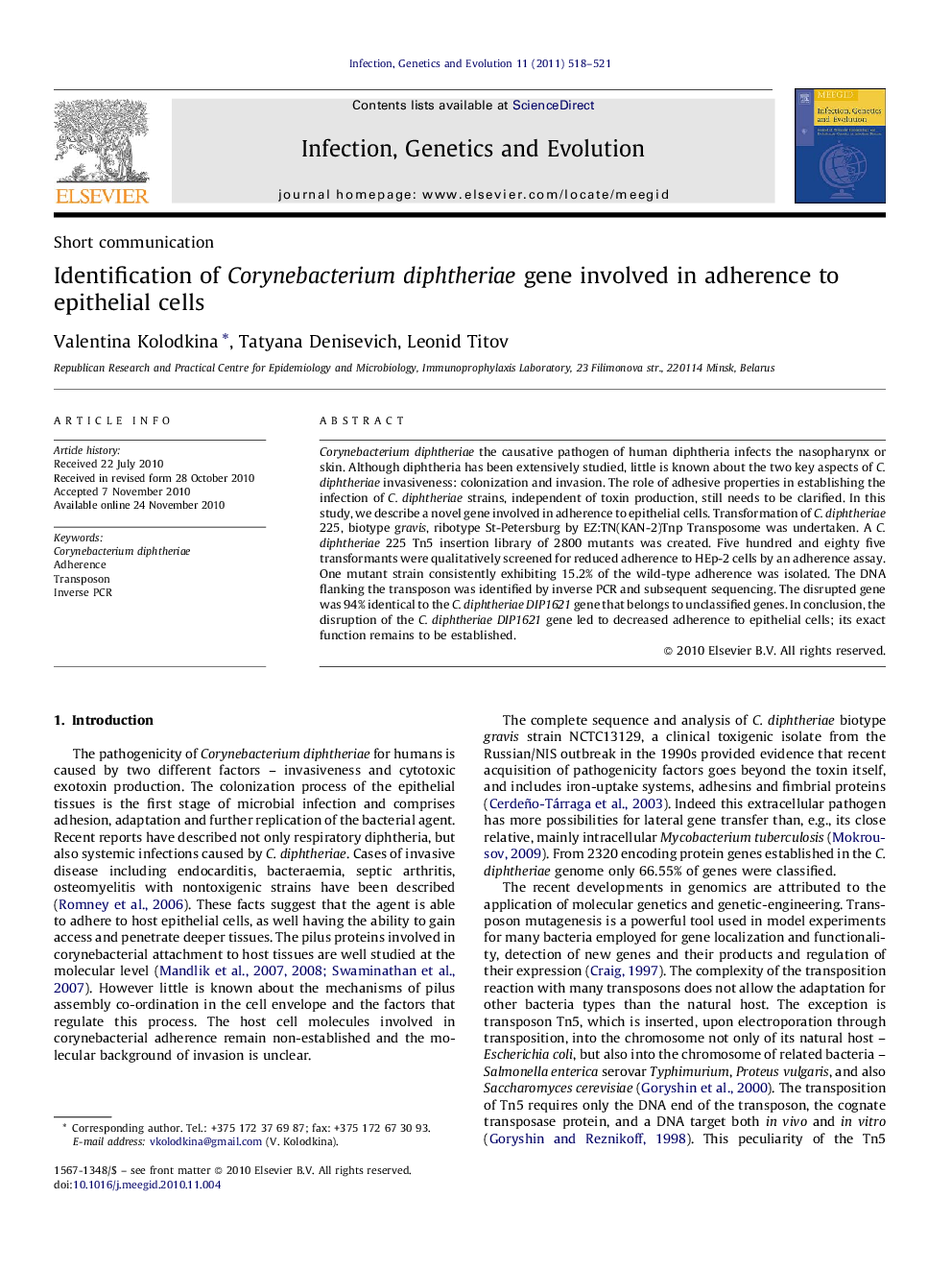| Article ID | Journal | Published Year | Pages | File Type |
|---|---|---|---|---|
| 5911906 | Infection, Genetics and Evolution | 2011 | 4 Pages |
Corynebacterium diphtheriae the causative pathogen of human diphtheria infects the nasopharynx or skin. Although diphtheria has been extensively studied, little is known about the two key aspects of C. diphtheriae invasiveness: colonization and invasion. The role of adhesive properties in establishing the infection of C. diphtheriae strains, independent of toxin production, still needs to be clarified. In this study, we describe a novel gene involved in adherence to epithelial cells. Transformation of C. diphtheriae 225, biotype gravis, ribotype St-Petersburg by EZ:TN(KAN-2)Tnp Transposome was undertaken. A C. diphtheriae 225 Tn5 insertion library of 2800 mutants was created. Five hundred and eighty five transformants were qualitatively screened for reduced adherence to HEp-2 cells by an adherence assay. One mutant strain consistently exhibiting 15.2% of the wild-type adherence was isolated. The DNA flanking the transposon was identified by inverse PCR and subsequent sequencing. The disrupted gene was 94% identical to the C. diphtheriae DIP1621 gene that belongs to unclassified genes. In conclusion, the disruption of the C. diphtheriae DIP1621 gene led to decreased adherence to epithelial cells; its exact function remains to be established.
